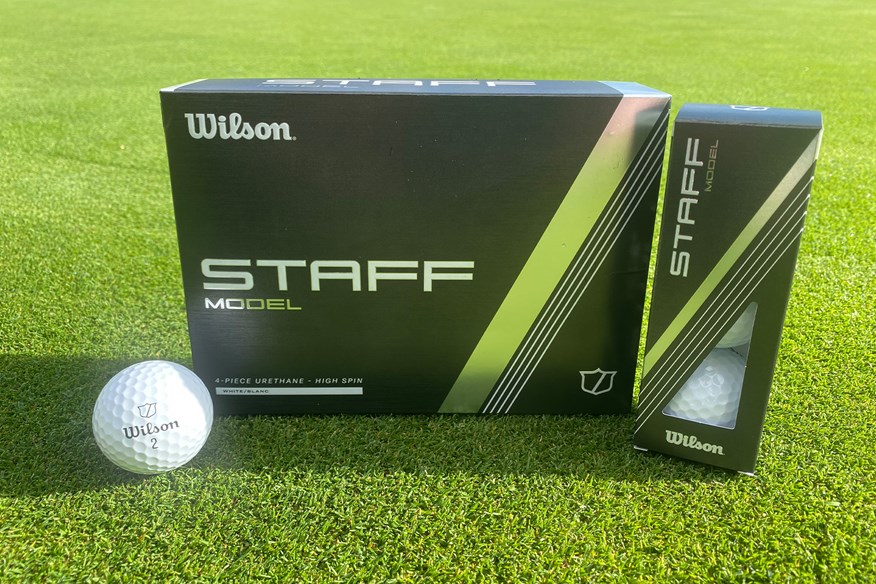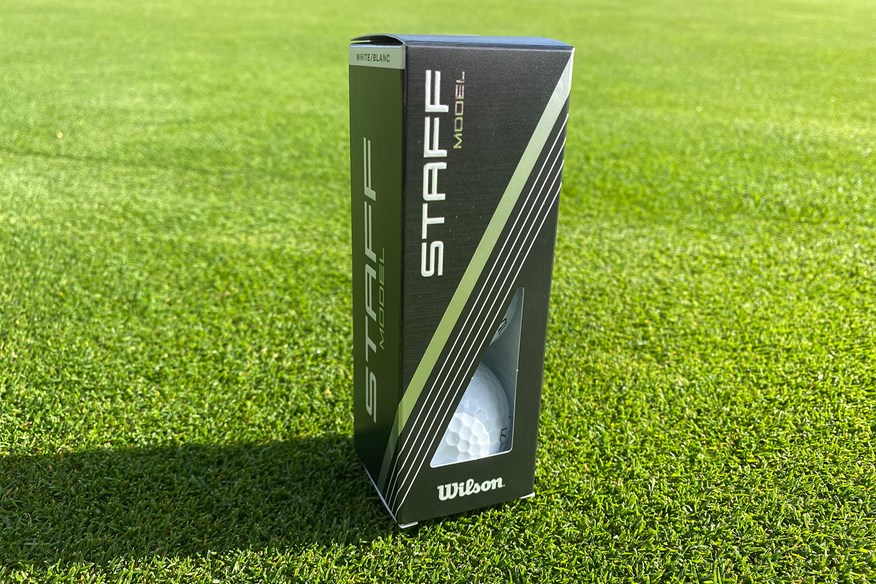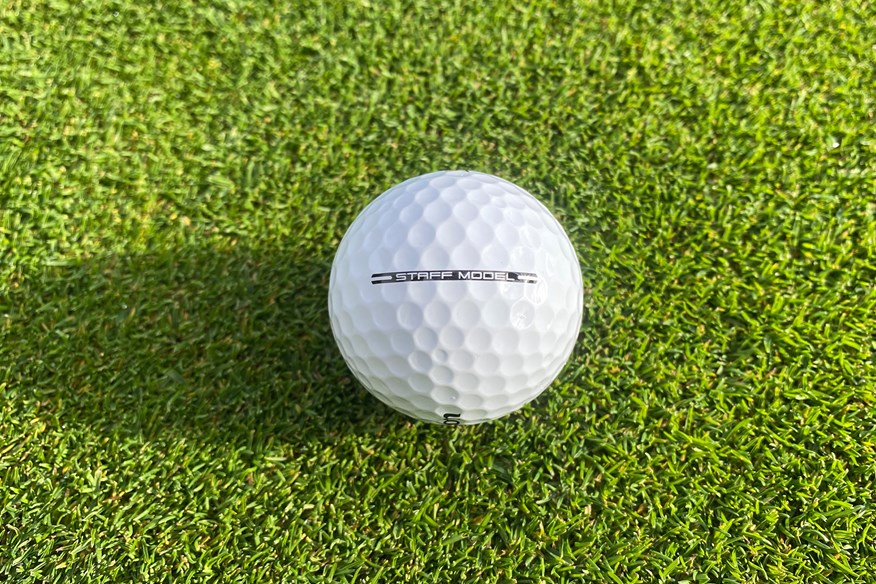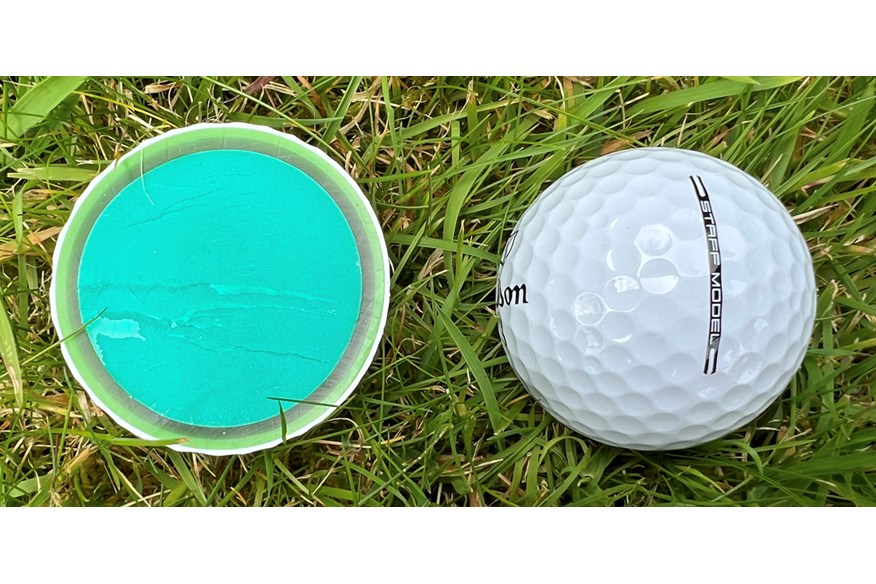Golfers with slow swing speeds can add 9 yards to their drives just by switching to this golf ball
Last updated:
Choosing the right golf ball can add significant distance to your drives and approach shots.
Having a slow swing speed can make golf feel difficult.
You can’t reach a lot of greens in regulation. A forced carry over water can spell the death of your scorecard. Long par 3s may necessitate you hitting driver while your playing partners are reaching for irons. And you’ll either need to find a group of similarly short-hitting mates or face the ignominy of being comprehensively outdriven by everyone else on every hole.
But what if I told you that you could gain as much as nine yards in driver carry distance, without increasing your swing speed, just by switching to the best golf ball for your clubhead speed?
And if you’re thinking nine yards doesn’t sound like much, remember that at slower swing speeds nine yards is likely to be the yardage gap between each club in your bag. So an extra nine yards could mean you’re hitting a 7-iron instead of a 6-iron for your approach shot, or an 8-iron instead of a 7-iron, and so on. The data (and common sense) shows that having shorter approach shots will lead to lower scores.
There’s also the fact that a better-performing ball will carry further on your approach shots as well as your drives. If you gain nine yards on your drives and six yards on your iron shots, you’ve effectively just made every hole 15 yards shorter.
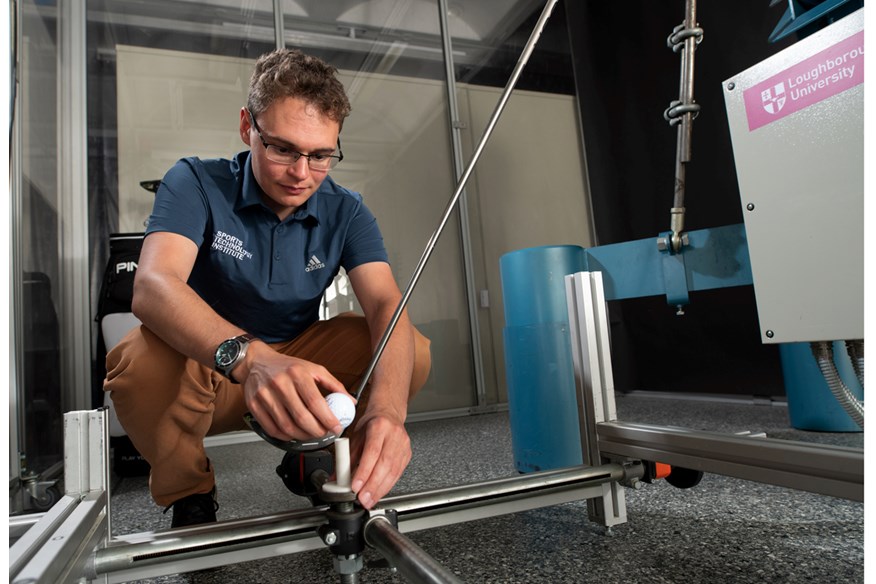
How we tested the golf balls
The recent Today’s Golfer robot golf ball test measured and compared 24 leading golf balls across every conceivable performance metric. Among those was distance. The test included hitting balls with driver at 85mph, 100mph, and 115mph, to see how different golf balls performed at different swing speeds. It’s the 85mph speed we’ll focus on here to see which balls perform best for golfers with slow swing speeds.
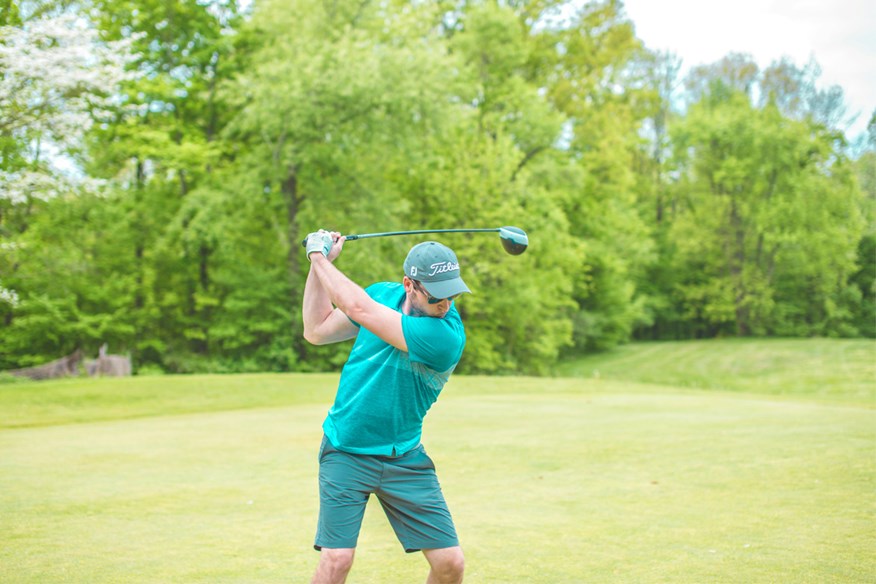
Gain driver distance by switching golf ball
At an 85mph clubhead speed, the Wilson Staff Model generated the longest carry distance of all the balls in the test, registering 193.6 yards. It came in 8.6 yards (4.6%) longer than the Srixon AD333, which produced the lowest carry distance – 185 yards.
The Vice Pro Plus (192.4 yards) and Callaway Chrome Tour X (192.1 yards) came in second and third for distance at this swing speed.
| Ball Speed (MPH) | Launch Angle (DEG) | Backspin (RPM) | Height (YDS) | Descent Angle (DEG) | Carry Distance (YDS) | Shot Area (SQ YDS) | |
| Wilson Staff Model | 124.6 (1) | 13.4 | 2657 | 39 | 29.4 | 193.6 (1) | 21 |
| Vice Pro Plus | 124.2 (T3) | 13.3 | 2670 | 38.7 | 29.1 | 192.4 (2) | 15.9 |
| Callaway Chrome Tour X | 124.2 (T3) | 13 | 2838 (Highest) | 39 | 29.6 | 192.1 (3) | 15.4 |
| Wilson Staff Model X | 124.5 (2) | 12.8 | 2722 | 38.7 | 28.6 | 191.8 | 17.9 |
| Seed SD 02 | 124.2 (T3) | 13.3 | 2615 | 38.5 | 28.7 | 191.8 | 10.8 (3) |
| Seed SD 01 | 123.9 | 13.5 | 2583 | 38.4 | 28.9 | 191.7 | 9.2 (1) |
| Titleist Pro V1 | 123.8 | 13.5 | 2513 | 38 | 28.4 | 191.2 | 13.6 |
| TaylorMade TP5 | 123.9 | 13.3 | 2637 | 38.4 | 28.7 | 191.1 | 14.3 |
| TaylorMade TP5x | 124.1 | 13.3 | 2565 | 38.2 | 28.3 | 190.9 | 17.8 |
| Callaway Chrome Tour | 123.9 | 13.2 | 2633 | 38.3 | 28.6 | 190.8 | 10 (2) |
| Vice Tour | 123.9 | 13.6 | 2428 | 37.8 | 28.1 | 190.3 | 19.4 |
| Titleist Pro V1x | 123.5 | 13.3 | 2646 | 38.2 | 28.5 | 190 | 15.5 |
| Vice Pro | 123.4 | 13.3 | 2548 | 37.8 | 28.2 | 189.4 | 22.4 |
| Snell Prime 3.0 | 123.2 | 13.2 | 2644 | 37.9 | 28.5 | 189.2 | 36.6 (Largest) |
| Vice Pro Air | 123 | 13.7 | 2477 | 37.6 | 28.3 | 189.2 | 30.8 |
| Srixon Q-Star Tour | 123.4 | 13.6 | 2442 | 37.6 | 28 | 189 | 26.6 |
| Callaway Chrome Soft | 123.3 | 13.2 | 2623 | 37.9 | 28.3 | 189 | 29.3 |
| Seed SD X1 | 123.3 | 12.9 | 2707 | 38 | 28.3 | 188.9 | 16.7 |
| Srixon Distance | 123.1 | 13.6 | 2352 | 37.1 | 27.5 | 187.6 | 29.1 |
| Snell Prime 4.0 | 122.9 | 13.3 | 2476 | 37.2 | 27.6 | 187.4 | 30.1 |
| Snell Prime 2.0 | 122.3 | 13.2 | 2671 | 37.4 | 28.3 | 186.9 | 12 |
| Kirkland Signature V3 | 122.3 | 12.9 | 2822 | 37.7 | 28.8 | 186.9 | 12.6 |
| TaylorMade SpeedSoft | 123 | 13.6 | 2236 (Lowest) | 36.5 | 26.7 | 185.7 | 14.8 |
| Srixon AD333 | 122.7 | 13.2 | 2398 | 36.6 | 26.8 | 185 | 30.9 |
| AVERAGE | 123.5 | 13.3 | 2579 | 37.9 | 28.3 | 189.7 | 19.7 |
It’s interesting that none of the balls delivering the most distance at 85mph are those typically aimed at golfers with this type of swing speed. The Wilson Staff Model, the Vice Pro Plus, and the Callaway Chrome Tour X are tour-level balls typically seen as aimed at good golfers with faster swing speeds, but the data proves that they deliver the most distance for golfers with slow swing speeds. Balls you might associate with slower swings, like the TaylorMade Speedsoft and Srixon AD333, actually ranked as the bottom two models for carry distance at 85mph.
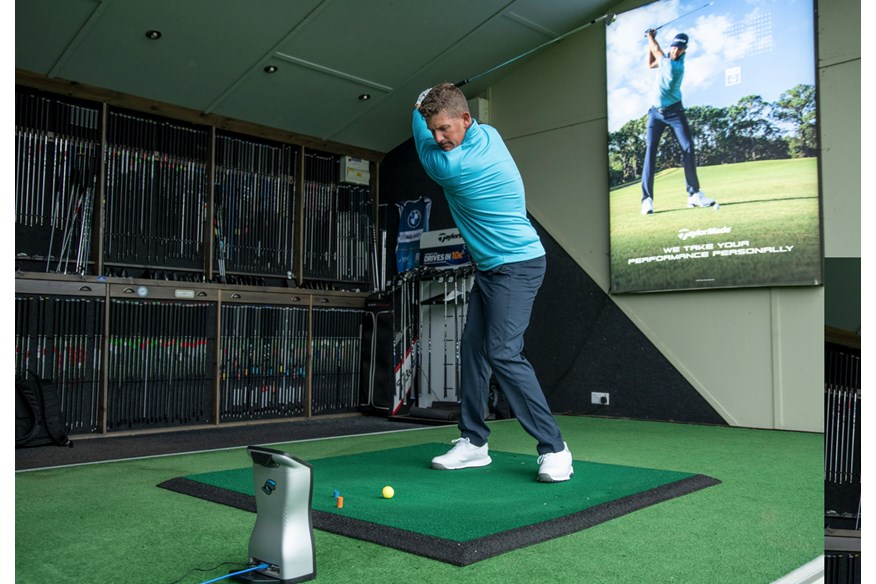
Gain iron distance by switching golf ball
The Srixon Q-Star Tour, Vice Pro Air, Wilson Staff Model, and Vice Tour were the longest golf balls when hit with a 7-iron. They were almost nine yards longer than the shortest ball. There’s more to iron performance than distance, but if you have a slow swing speed and struggle to reach greens, some extra yardage can make a big difference.
| Ball Speed (MPH) | Launch Angle (DEG) | Backspin (RPM) | Height (YDS) | Descent Angle (DEG) | Carry Distance (YDS) | Shot Area (SQ YDS) | |
| Srixon Q-Star Tour | 108.1 | 21.3 | 4985 | 32 | 44.8 | 156.5 (T1) | 7.2 (1) |
| Vice Pro Air | 107.6 | 21.5 | 4788 (Lowest) | 31.8 | 44.6 | 156.5 (T1) | 15.1 |
| Wilson Staff Model | 108.7 (1) | 21.1 | 5256 | 32.1 | 45.2 | 156.4 (3) | 13.3 |
| Vice Tour | 107.9 | 21.4 | 4967 | 31.9 | 44.9 | 156.3 | 17.2 |
| Seed SD 01 | 108.5 (2) | 21 | 5314 | 31.9 | 45.1 | 155.8 | 9.5 |
| Seed SD 02 | 108.2 (T3) | 21.1 | 5188 | 31.9 | 45 | 155.8 | 37.1 |
| Vice Pro | 107.7 | 21.1 | 5103 | 31.7 | 44.7 | 155.2 | 8.4 |
| Vice Pro Plus | 108.2 (T3) | 21 | 5379 | 31.7 | 45.1 | 154.9 | 9.9 |
| Snell Prime 4.0 | 107.2 | 21.1 | 4973 | 31.6 | 44.3 | 154.8 | 10.5 |
| TaylorMade TP5x | 108 | 20.7 | 5468 | 31.6 | 44.8 | 154.2 | 13.4 |
| Callaway Chrome Soft | 107.2 | 21.2 | 5173 | 31.4 | 44.7 | 154.1 | 18.5 |
| TaylorMade SpeedSoft | 107.2 | 21.2 | 5185 | 31.5 | 44.7 | 154.1 | 41.4 (Largest) |
| Callaway Chrome Tour | 107.7 | 20.8 | 5384 | 31.5 | 44.7 | 154 | 10 |
| Snell Prime 3.0 | 106.9 | 21 | 5145 | 31.3 | 44.4 | 153.5 | 24.6 |
| Srixon Distance | 107 | 21 | 5306 | 31.3 | 44.6 | 153.1 | 38.7 |
| Srixon AD333 | 106.9 | 21.1 | 5276 | 31.3 | 44.7 | 153.1 | 29 |
| TaylorMade TP5 | 107.7 | 20.7 | 5672 | 31.4 | 45 | 152.9 | 16.6 |
| Titleist Pro V1 | 107.5 | 20.7 | 5594 | 31.2 | 44.8 | 152 | 8.2 (3) |
| Wilson Staff Model X | 108.1 | 20.3 | 6084 | 31.3 | 45.2 | 151.8 | 7.8 (2) |
| Snell Prime 2.0 | 106.5 | 20.7 | 5461 | 31 | 44.4 | 151.4 | 8.7 |
| Seed SD X1 | 107.1 | 20.4 | 5771 | 31.1 | 44.7 | 151.3 | 15.8 |
| Titleist Pro V1x | 107.1 | 20.4 | 5835 | 31 | 44.7 | 151 | 8.3 |
| Callaway Chrome Tour X | 107.6 | 20.1 | 6193 (Highest) | 31 | 44.9 | 150.5 | 16.2 |
| Kirkland Signature V3 | 106 | 19.7 | 6109 | 30.4 | 43.9 | 147.8 | 17.2 |
| AVERAGE | 107.5 | 20.9 | 5400 | 31.4 | 44.7 | 153.6 | 16.8 |
Should you switch golf ball?
Even if the data doesn’t compel you to switch to the Wilson Staff Model, it’s worth seeing how the golf ball you’re using performs and how much you could gain by switching to a different model.
If the model you’re interested in isn’t listed here, check out the 2023 robot golf ball test or our pick of the best golf balls for slow swing speeds.
See the standard Staff Model as an alternative to the Titleist Pro V1 and you’ll be thinking exactly along the right lines. The 2024 model has a compression of 95 which is 8.7% softer than the Staff Model X, so expect 100 RPM less driver and 300 RPM less iron spin, plus a lower more penetrating ball flight.
Read our full Wilson Staff Model (2024) golf ball review.
Pros
- An impressive alternative to the Titleist Pro V1, Callaway Chrome Tour and TaylorMade TP5
- An accurate and consistent choice
Cons
- The Wilson Staff Model X offers more wedge and iron spin
| Construction | 4-Piece |
| Cover | Urethane |
| Cost per ball | $4.16 |
But… I’m not a robot
If we had $1 for every time someone said we should use real golfers instead of a robot for testing, we’d have enough money to buy a whole army of the $100,000 robots we use. A whole army of robots that can pelt golf balls at 200mph with unerring accuracy… quite a scary prospect, when you think of it.
Anyway, we’re not looking to take over the world with our robot army, but we do know from years of experience that a robot is the only way to guarantee the consistency of strike required to isolate the one variable we are trying to test: the performance of the golf ball. Even the world’s best golfers can’t hit a ball exactly the same way, time after time, which brings in other variables. That’s why every golf manufacturer uses a robot when developing golf balls and it’s why we use a robot to test those golf balls head-to-head.
Thanks to the robot’s adjustability it’s possible to control lie angle, swing path, face angle, attack angle, impact location, hip rotation, and wrist action at swing speeds from 5 – 130 MPH. There simply isn’t a better swinger out there – not even among the world’s best golfers.
When picking the best golf balls, we use human testing – both on a launch monitor and on the course – to measure intangibles like sound and feel, but for pure data, a robot is a must-have.

Not all golfers are created equal
There’s more to your golf swing than just swing speed. Two golfers with the same swing speed could have quite different impact conditions and therefore produce a different launch angle, spin rate, and carry distance. As a result, those two golfers might get the best results from slightly different golf balls. For instance, if you generate too much spin with your driver, one of the best low-spin golf balls may give you more distance.
That said, we’d be surprised if a ball that ranks near the bottom for distance in our test produces the most distance for you.


